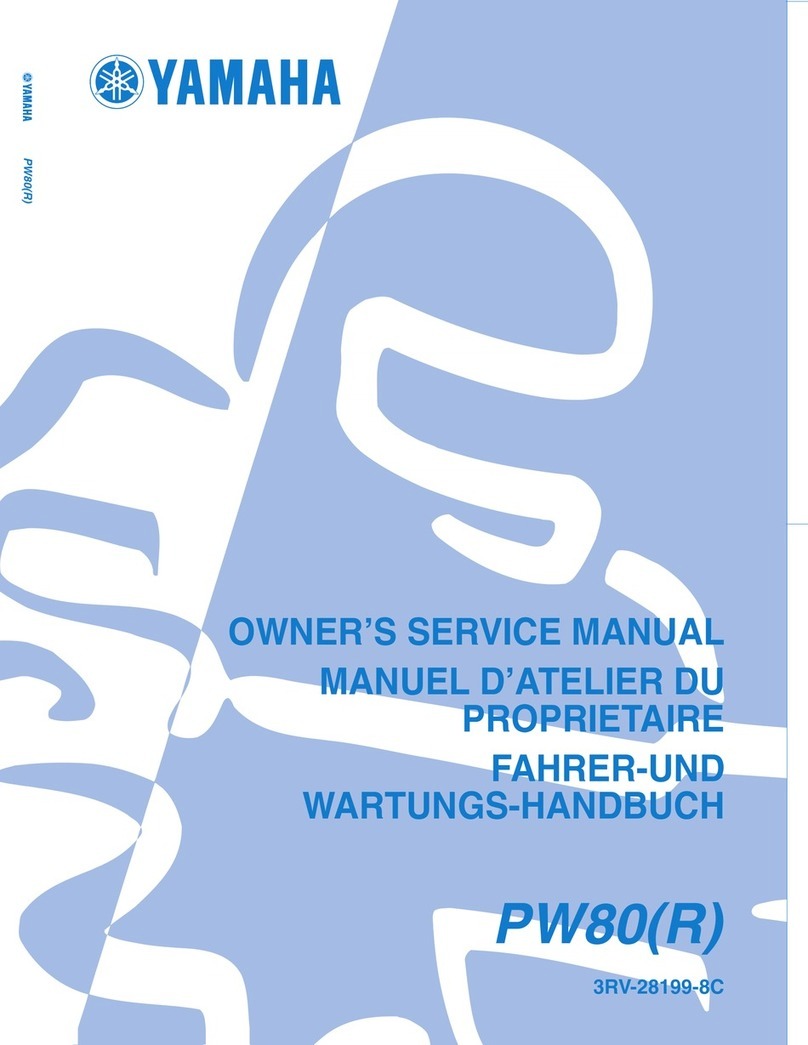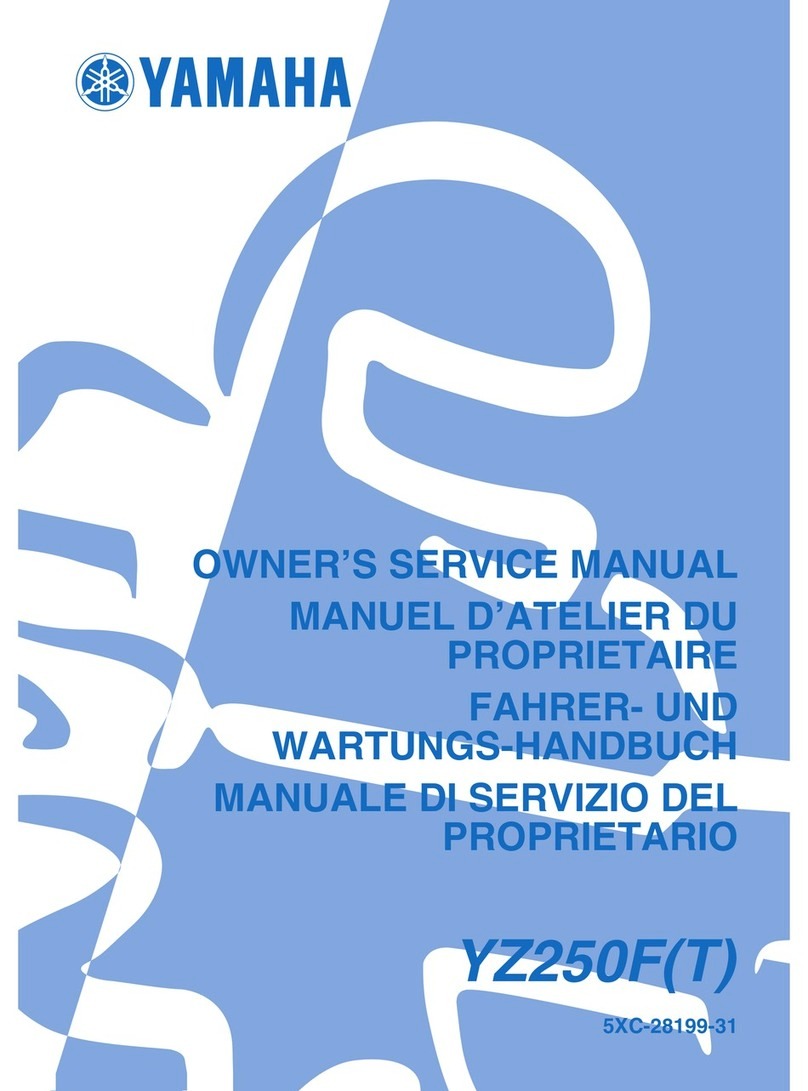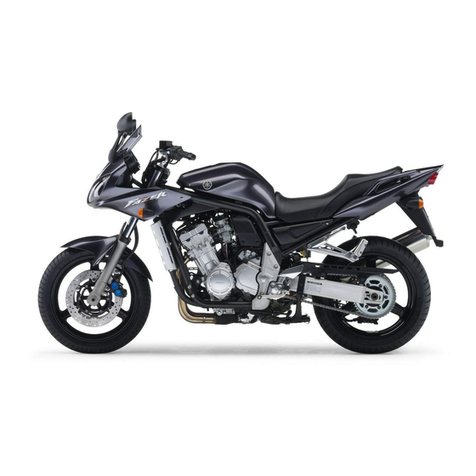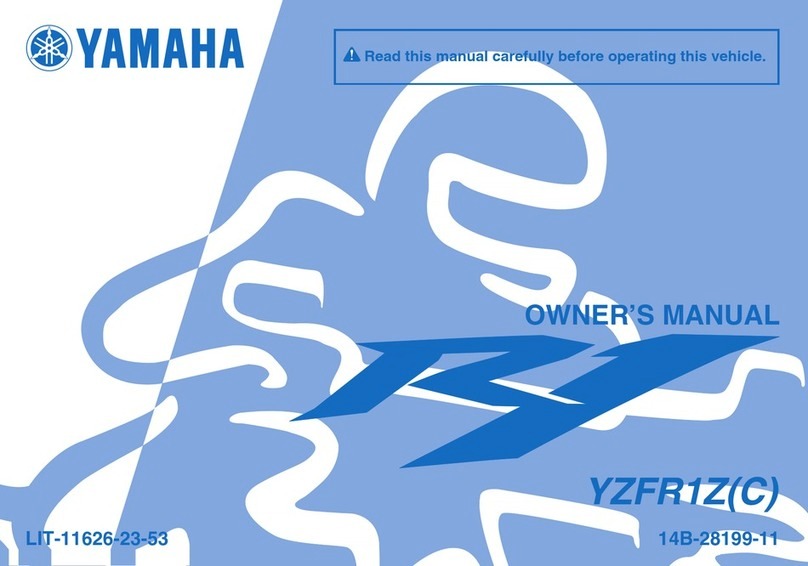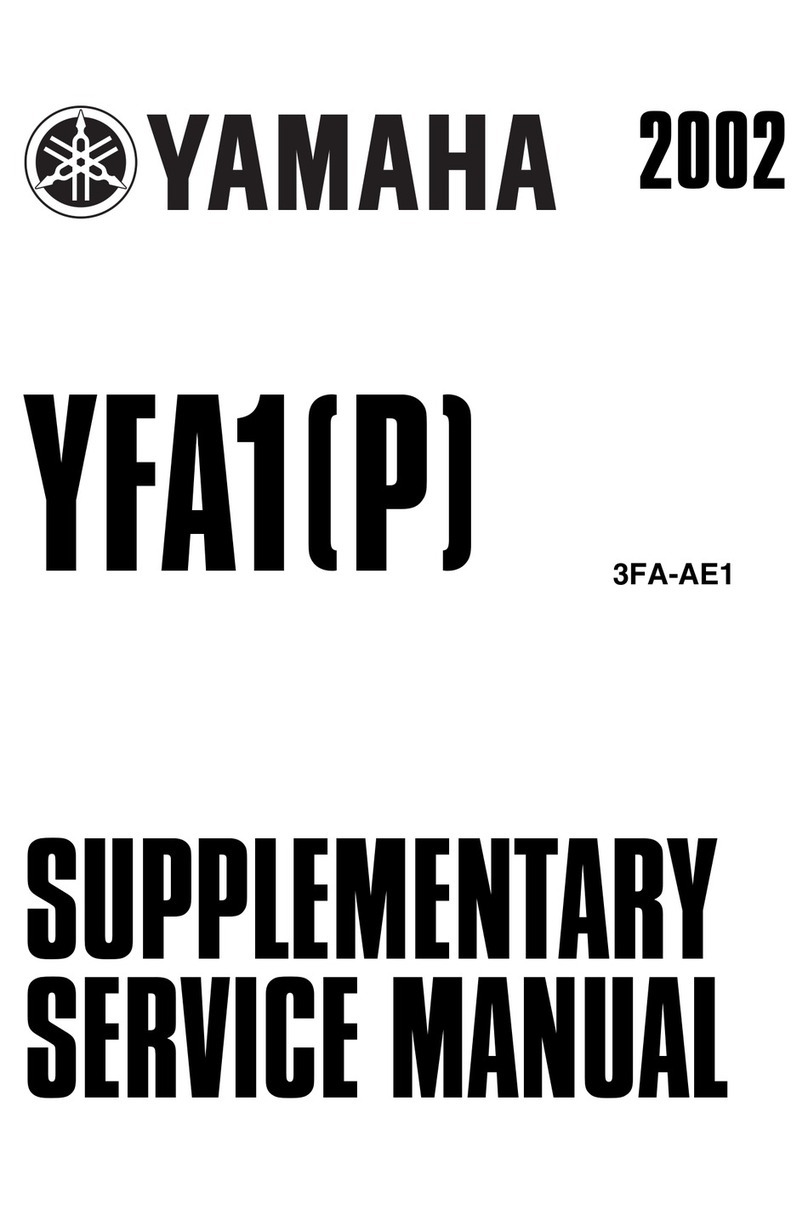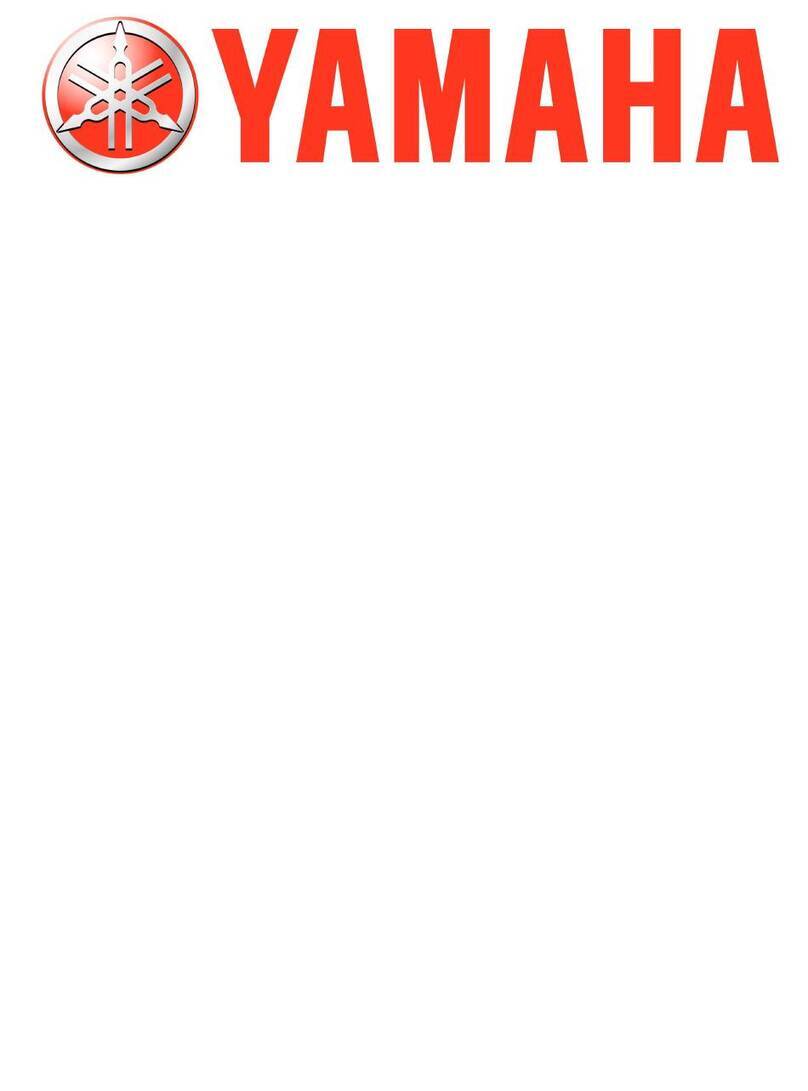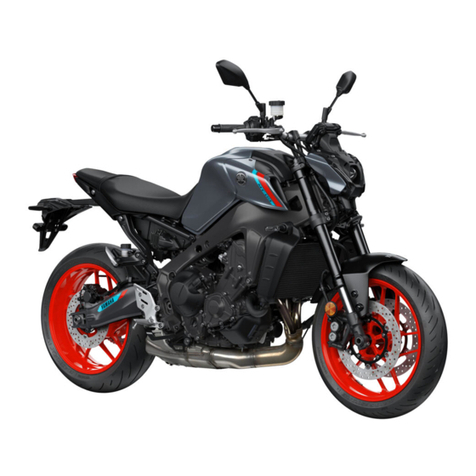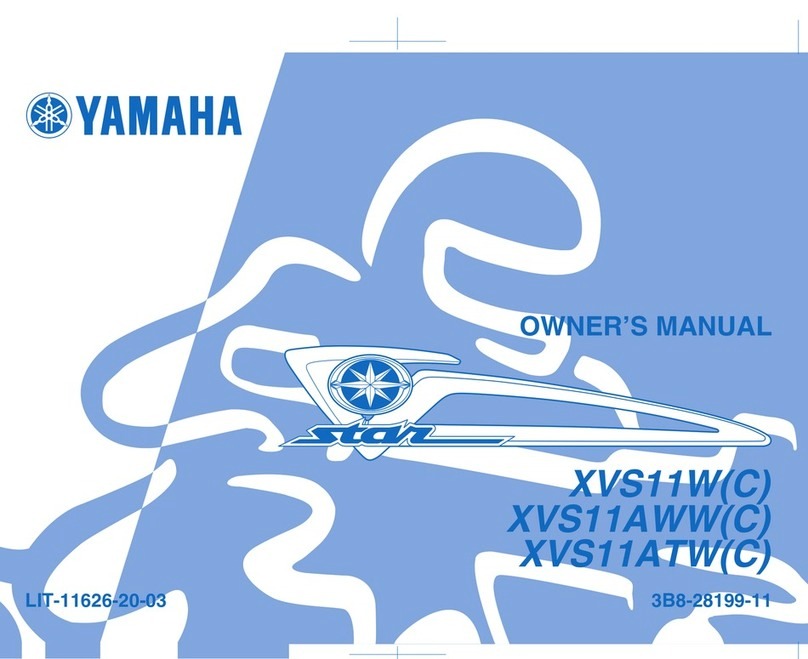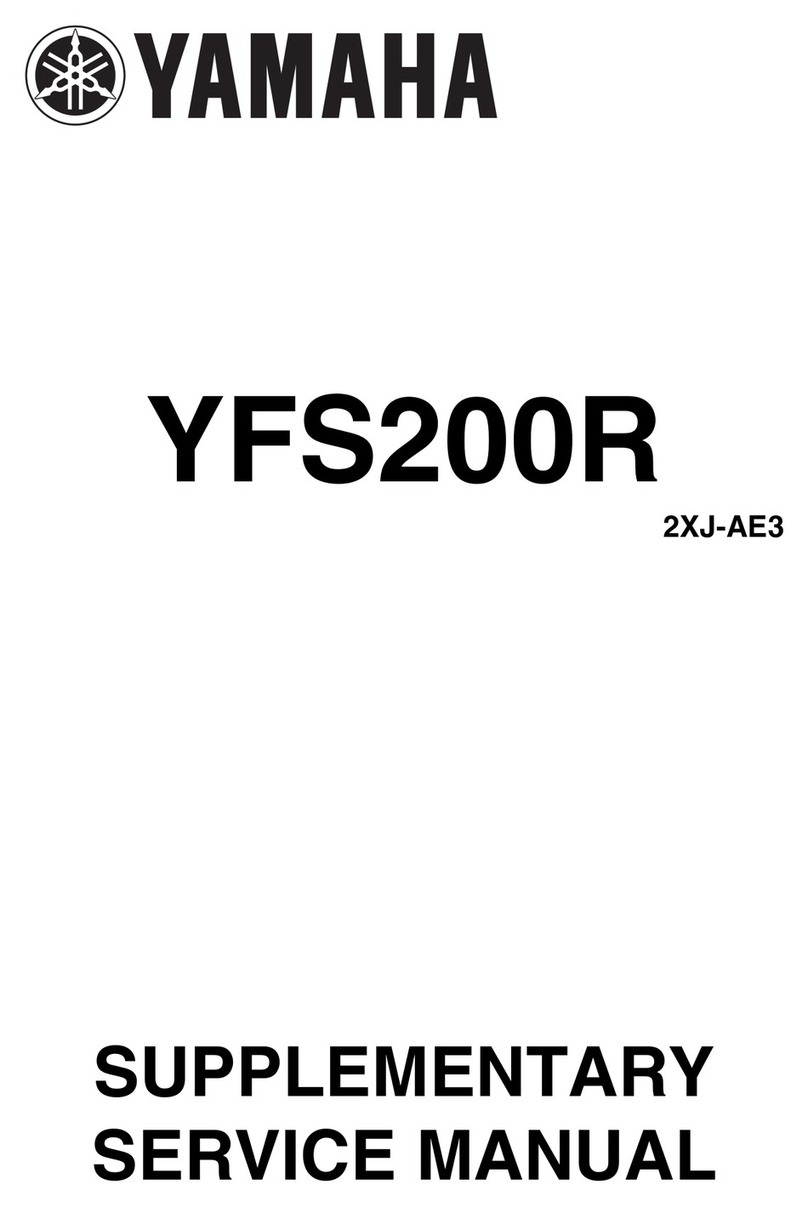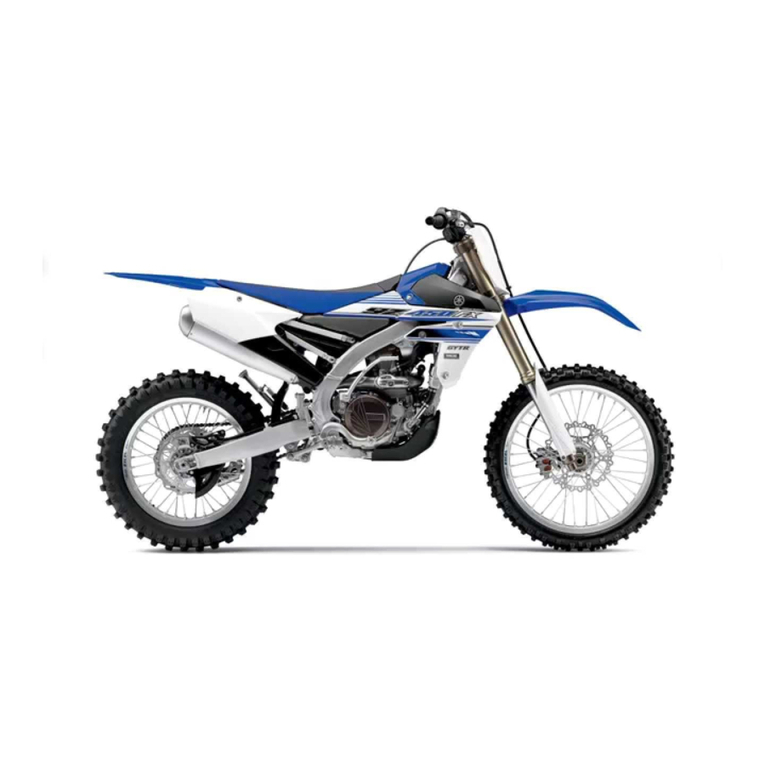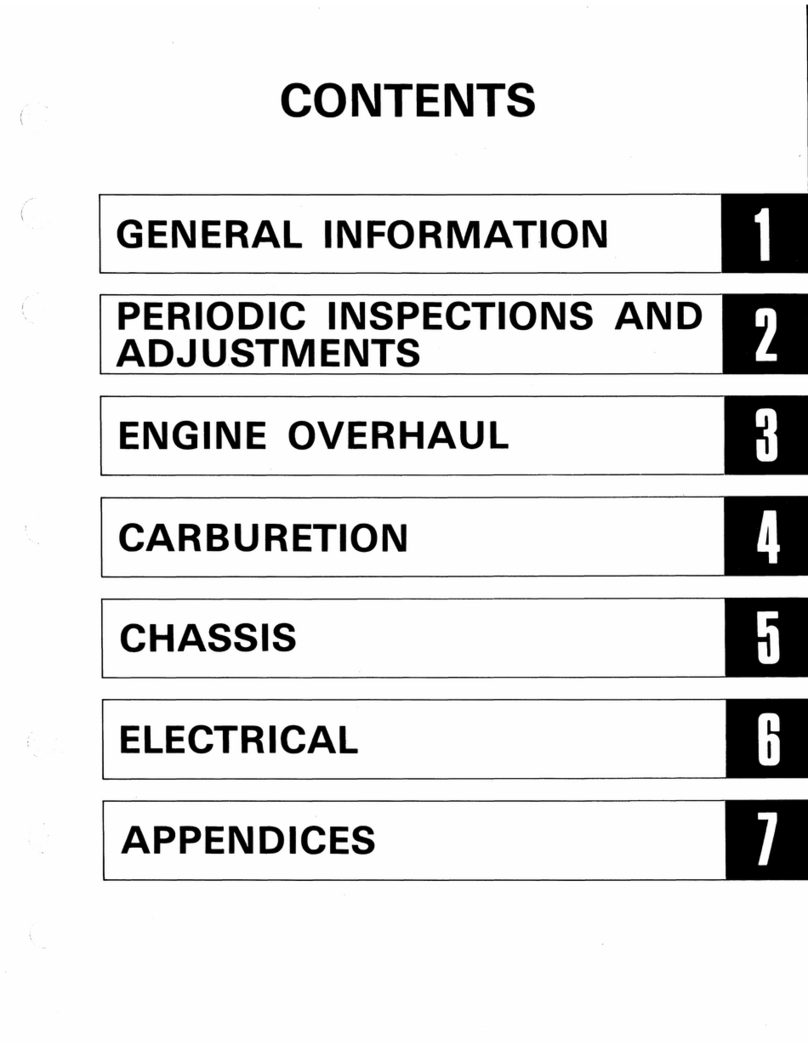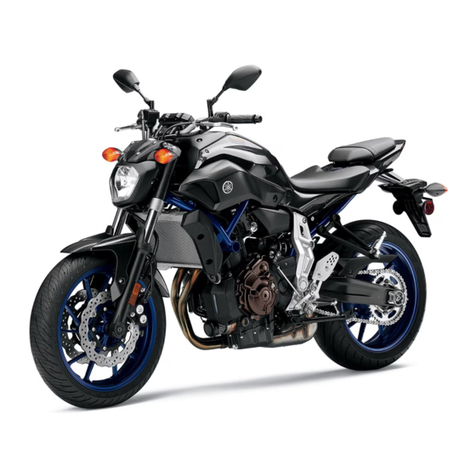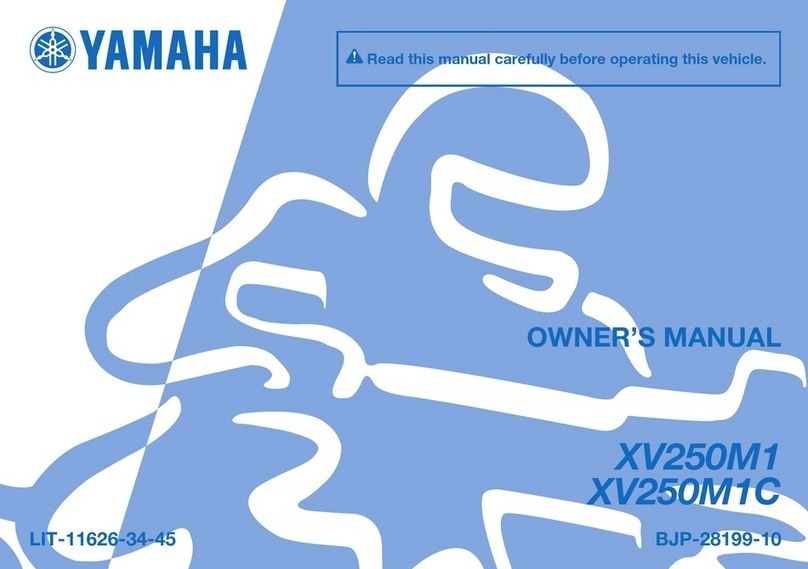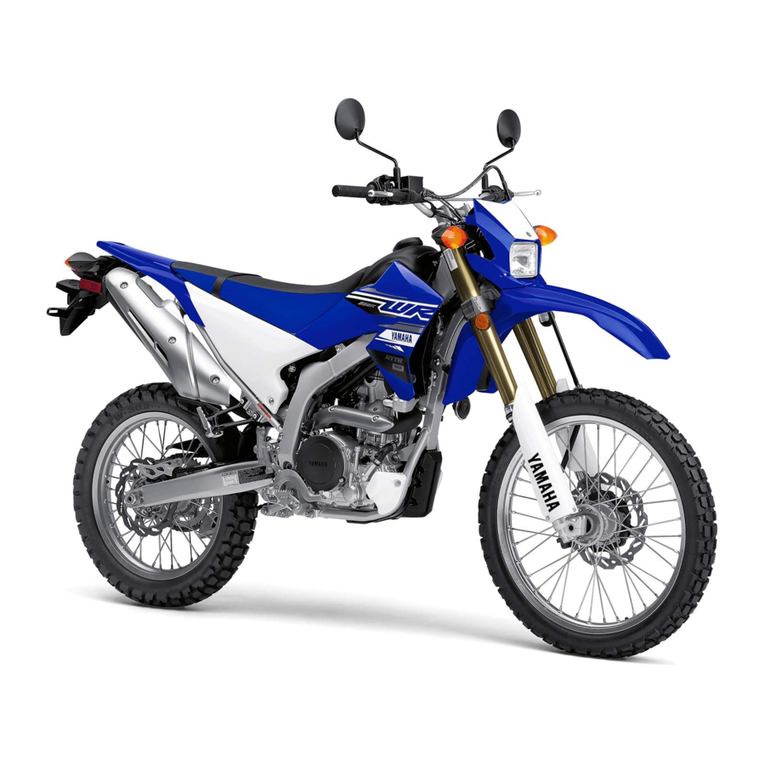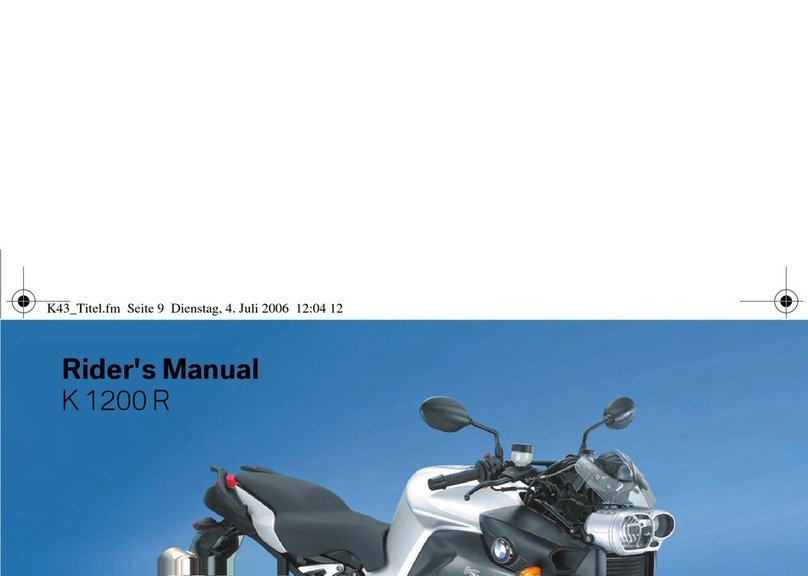NOTICE
This manual was written by the Yamaha
Motor
Company primarily
for
use
by Yamaha dealers
and their qualified mechanics. It
is
not
possible to put
an
entire mechanic's education into one
manual,
so
it
is
assumed
that
persons using this book
to
perform maintenance and repairs on
Yamaha motorcycles have a basic understanding
of
the mechanical concepts and procedures in-
herent
to
motorcycle repair technology.
Without
such knowledge, attempted repairs or service
to
this model may render it
unfit
to
use
and/
or unsafe.
This model
has
been designed and manufactured
to
perform within certain specifications
in
regard
to
performance and emissions. Proper service with the correct tools
is
necessary to en-
sure that the motorcycle will operate
as
designed. If there is any question about a service pro-
cedure, it
is
imperative
that
you contact a Yamaha dealer for any service information changes
that
apply
to
this model. This policy
is
intended
to
provide the customer with the most satisfac-
tion from his motorcycle and
to
conform with federal environmental qualityobjectives.
Yamaha Motor Company, Ltd.
is
continually striving
to
improve
all
models manufactured by
Yamaha. Modifications and significant changes
in
specifications
or
procedures will
be
forwarded
to
all
Authorized Yamaha dealers and will, where applicable, appear
in
future editions
of
this
manual.
NOTE:
______________________________________________________
__
This Service Manual contains information regarding periodic maintenance
to
the emission con-
trol system
for
the XT550J. Please read this material carefully.
Particularly important information is distinguished in this manual bythe following notations:
NOTE: A NOTE provides key information
to
make procedures easier
or
clearer.
CAU11ON:
A CAUTION indicates special procedures
that
must
be
followed
to
avoid damage
to
the motorcycle.
WARNING:
A
WARNING
indicates special procedures
that
must
be
followed to avoid injury
to
a motorcycle operatoror person inspecting or repairing the motorcycle.
"
SERVICE DEPT.
INTERNATIONAL
DIVISION
YAMAHA
MOTOR
CO., LTD.

